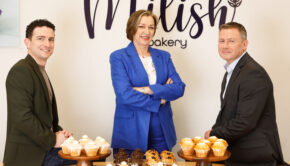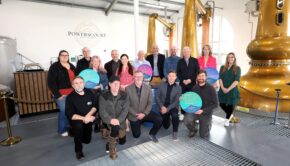Shoppers in the recession

Convenience retailers can derive huge benefits from understanding shopper behaviour, according to SIEMON SCAMELL-KATZ, founder of TNS Magasin
18 May 2009
There’s no doubt about it, shoppers are trading down, and it’s not only those who are coping with redundancy or shorter hours. Many more folk fear possible unemployment and are tempering their habits accordingly. A large number of people in work are reducing expenditure as a precautionary measure, and by almost as much as those who are unemployed.
This is inevitably creating a massive shift in shopping behaviour. The major beneficiaries are the discounters, which are rapidly increasing market share. As they extend their estates, more and more shoppers are using them not only for commodity purchasing but also for other shopping, including top-up missions for fresh foods.
At the same time, private label shares are growing. Shoppers’ need to save money has led to many switching to cheaper brands or own-brand, particularly for commodity products. The chilly economic conditions are also driving a trend to fewer, more controlled shopping occasions; an increasing number of people are using shopping lists.
This is not all at the expense of the supermarkets; the convenience channel is also being affected. Discounters are well fitted to cater for convenience shoppers, while the drive towards lower price coupled with increased pre-planning and fewer shopping trips mean lower traffic in traditional convenience outlets. With fewer shoppers coming through the door, convenience stores need to work their existing real estate harder.
So what does that mean for convenience retailers?
Stop spending money on things that don’t work and start investing in things that do. Retailers, large and small, spend a lot of money on things that have no influence on what people buy. This starts outside the store; very little point-of-sale material placed in this area is noticed by shoppers at all and almost none is recalled later. Approaching the store and at the entrance, the shopper has a functional, task-oriented mindset. She or he is not receptive to POS, it simply doesn’t work here.
Once within the store, people’s different shopping missions dictate their use of the store space. A top-up shopper, in the outlet for an average of eight minutes, will behave differently from a snack and drink shopper who is there for about four. In a convenience store, categories like milk and magazines strongly influence customer flow. Understanding the prevailing missions and locating key categories appropriately enables the retailer to improve store layout and reduce cold spots.
This strategy has been successfully put into practice. TNS Magasin worked with Unilever and United Co-operatives to create a store layout based on prevalent shopping missions such as ‘lunchtime snack-and-drink’, ‘meal for tonight’ and ‘top-up’. The results included higher penetration to nearly all categories, better flow around the store, an increase in key missions and a significant sales uplift.
There are other simple tactics that can be implemented immediately to increase sales. Encouragingly, despite the general move to pre-planning, around 40% of shoppers buy more than they anticipated while in a convenience store. Locating baskets throughout the store encourages this incremental purchasing; one retailer recorded an 11% sales uplift using this technique.
Ensuring high visibility
Shoppers recognise products by their colour and shape: over two-thirds of eye fixations are on colour. Using these visual cues, they recognise signpost brands, which they in turn use to navigate within stores. Utilising this knowledge to create authoritative POS famously resulted in a 23% sales uplift for Guinness. It will be interesting to see whether the shift to private label affects the use of national brands as signposts.
In this context, one area which has often proved problematical for convenience operators is promotions. Shoppers don’t expect offers in this channel so it is hard to for promotional messages to cut through. Plus, few shoppers interact with gondola ends in small stores, they are not visible to passing customer traffic. Controlled flow is the key. Fewer promotions combined with better flow will work better than several gondola end offers in a poor flow zone.
Forget overhead signage too, it’s a waste of money. We don’t walk around looking up in the air. In fact, we naturally look 15 to 30 degrees downwards, which is why it’s also inadvisable to place promotions at literal eye level, and much better to site them slightly lower. Furthermore, promotions are most effective within their own categories, because that’s where shoppers will be looking for the items concerned.
It’s also possible to make a virtue of necessity. In convenience stores, almost half the total visit time is spent in the queue. For this reason, shoppers are attracted by impulse products such as chewing gum, confectionery and snacks at checkouts, provided they are within easy reach. Be aware though that cash register staff obscure the wall behind them. So shoppers look at them, not back wall POS, while they’re queuing.
In conclusion, you can use shoppers to maximise your real estate in challenging times, but I urge you to study what your shoppers do, not what they say. And remember:
- Don’t waste your money communicating outside
Create a mission-based layout to improve store usage
Dot baskets around the store to encourage incremental purchasing
Promote selectively and within the product area
Ensure product around the cash desk area is within reach of the queue
Consider the impact of your staff and cash register upon back wall visibility
More ways to beat the recession
The shift to cheaper brands makes it increasingly important to offer, and communicate, value for money. Change shoppers’ perception of your prices; use the store environment more effectively to communicate your price parity with the multiples.
Take advantage of your location advantage. Many commodity items are now being bought on-line or in bulk. So shoppers are more receptive to smaller local outlets for specialist shopping missions. Plus they save fuel.
Ensure availability. In tough times shoppers are more likely to do without if you’re out-of-stock.
Consider fresh food (and locally-sourced food) as well as food-to-go. The majority of purchases in convenience outlets are for consumption on the same day and a substantial proportion are for immediate use.
Keep treats in stock. People are eating out less and indulging at home more. Treating remains an important element of the convenience mission.
Make your outlet easy to shop. By improving layout and adjacencies, you can make the shopping trip easier and increase shoppers’ perceptions of the ranges you offer.
Try day part merchandising. A great opportunity for small stores to maximise sales.
Researching the shopper
Today’s consumer faces unprecedented media fragmentation, which means that there is no longer a single medium for marketing messages. Brand communication has traditionally focused on advertising, with in-store marketing seen as the poor relation. In this fragmented world however, in-store activity is crucial for success; shoppers constitute a vital audience.
But how can we understand shoppers? Traditional research methods give only partial insight into shopper behaviour.
Consumers are unreliable witnesses:
- 99% of the visual stimuli that assail the shopper in a supermarket are screened out by the brain
Respondents are only able to describe a fraction of their behaviour in a traditional interview; up to 80% of shopping decisions are made sub-consciously
Respondents post-rationalise the shopping process when interviewed or provide the answer that they believe is expected
Most consumers lack the vocabulary to describe retail design and environments or the decision making process
To understand shoppers, it is necessary to observe them shopping, using objective methodologies such as filming and eye tracking.
TNS Magasin has been researching shopper behaviour since 1991. It uses a range of techniques, such as filmed research, eye tracking, observational research and quantitative research. For more information contact (0044)1858 461461 or visit www.tns-magasin.com.



 Print
Print






Fans 0
Followers